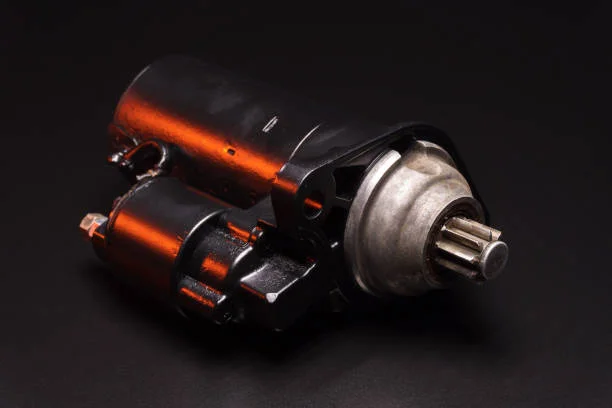When your motorcycle refuses to start, it is easy to feel annoyed and unsure where to begin. Most riders immediately assume the battery is the problem because it is the simplest part to blame. A motorcycle accident attorney will often tell you that many riders misread starter motor issues as battery trouble after a crash or sudden jolt. The truth is that both problems can look almost identical. With a little clarity, you can spot the difference and avoid unnecessary repairs.
Why Riders Confuse Starter Problems with Battery Issues
Riders often mix up starter problems with battery issues because both parts affect how the motorcycle cranks. When the engine barely turns or clicks, it naturally feels like a weak battery even if the starter is the real culprit. Since the symptoms overlap so closely, it can be surprisingly difficult to tell which one is failing without a closer look.
What Happens When the Starter Motor Fails
When a motorcycle starter motor begins to fail, it can create a mix of symptoms that are easy to confuse with battery trouble. Here is what is typically going on inside the starter.
Power Loss Inside the Starter
The starter can lose the force it needs to turn the engine, which leads to slow or weak cranking. This often feels just like a tired battery, so many riders misread the signs.
Worn Internal Parts
Components such as brushes, gears, or the starter clutch can wear down over time. When they stop making proper contact, the starter may work only occasionally, turning each start attempt into a guessing game.
Electrical Faults Within the Starter
Electrical connections inside the starter can loosen, corrode, or overheat. This can cause clicking, partial engagement, or complete silence when you press the start button, making accurate diagnosis more difficult.
Starter Motor Symptoms That Feel Like Battery Trouble
Starter issues can easily trick riders into blaming the battery because the signs overlap so closely. Here are the symptoms that often cause the confusion.
Slow or Weak Cranking
The engine may turn over sluggishly, almost as if the battery is struggling to provide enough power. This slow response can make you think the battery is failing, even when the starter is the real problem.
Clicking Sounds When You Press Start
You might hear a single click or a rapid series of clicks when you hit the start button. Many riders immediately think this means the battery is dead, but it can actually signal the starter is not engaging properly.
Intermittent Starting
Sometimes the bike starts normally, and other times it does not respond at all. This inconsistency often leads riders to believe the battery charge is unstable, when the starter may be failing internally.
Lights Turn On but the Engine Will Not Crank
The dash and headlight may power on like everything is fine, yet the engine stays silent. This often makes riders assume the battery has just enough power for lights but not enough for the engine, although the starter may be the part giving up.
No Sound or Response at All
Pressing the start button might produce complete silence, which feels like a dead battery. In reality, the starter could be stuck or failing to engage due to internal wear or electrical faults.
Signs That Suggest the Battery Really Is the Problem
Sometimes the issue really is the battery, and knowing the signs can help you avoid unnecessary starter repairs. Here are the most common indicators.
Dim Headlights and Electronics
If the headlights, dashboard lights, or other electronics are unusually dim, the battery may be losing its charge. This happens because the battery cannot supply enough power to run both the lights and the starter effectively.
Trouble Starting After Sitting
A motorcycle that struggles to start after sitting for a day or more often points to a weak battery. This is especially noticeable in colder weather, where the battery’s capacity naturally decreases.
Frequent Need for Jump Starts
If you regularly need a jump start to get your bike running, it is usually a sign the battery cannot hold a charge. Starter issues can mimic this, but repeated jumps almost always point back to battery health.
Visible Battery Damage or Age
A battery that is old, swollen, or corroded is more likely to fail than a starter. Checking for physical damage or corrosion at the terminals can quickly reveal whether the battery is the culprit.
Electrical System Acting Strange
Other electrical components, like turn signals or horn, may behave inconsistently if the battery is weak. When multiple parts of the bike’s electrical system misfire, the starter is less likely to be the problem.
Simple Checks You Can Do Before Tearing the Bike Apart
Before assuming the worst, there are a few easy checks you can do to figure out if the problem is the starter or the battery. These steps are safe, simple, and can save time and money.
Inspect the Battery Terminals
Check that the battery terminals are clean and tightly connected. Loose or corroded terminals can prevent the bike from starting even if the battery itself is in good condition.
Try a Jump Start
Attempting a jump start can help determine if the battery has enough power. If the bike starts with a jump, the battery is likely weak or failing rather than the starter.
Listen Carefully When You Start
Pay attention to the sounds the bike makes when you press the start button. A single click, multiple clicks, or a grinding noise can indicate a starter problem rather than the battery.
Check Other Electrical Components
Turn on the lights, horn, and turn signals to see how they respond. If these components work fine, it may point toward a starter issue instead of the battery.
Examine the Battery Age and Condition
Consider how old the battery is and whether it has any visible signs of wear, swelling, or leakage. Older batteries are more likely to fail and often show warning signs before complete failure.
Final Thoughts
Understanding whether your bike’s starting trouble comes from the battery or the starter can save you time, money, and frustration. Paying attention to the signs and doing a few simple checks can help you pinpoint the problem before rushing to replace parts. Just like a motorcycle accident attorney helps riders navigate complex situations, knowing the difference between starter and battery issues keeps you in control and back on the road safely.






